In the realm of canine health, torn ACL or CCL injuries in dogs present a significant challenge. These ligament tears, commonly affecting larger breeds, can lead to debilitating symptoms such as limping and swelling.
Prompt recognition and appropriate treatment are crucial in managing these injuries effectively. From surgical interventions to rehabilitation protocols, a comprehensive understanding of the nuances involved in addressing ACL or CCL tears is essential for pet owners and veterinarians alike.
Stay tuned to uncover the intricacies of symptoms, treatment modalities, and preventive measures to safeguard your canine companion's joint health and overall well-being.
Key Takeaways
- CCL injuries in dogs cause symptoms like limping, swelling, and difficulty bearing weight.
- Surgery, such as TPLO, is often recommended for fully torn CCL in large dogs.
- Larger, muscular breeds like Labradors and Rottweilers are prone to CCL injuries.
- Overweight dogs of any breed are susceptible to CCL injuries and should be monitored.
CCL Vs. ACL in Dogs
When comparing CCL to ACL in dogs, it is essential to understand the structural and functional differences in these ligaments that play a crucial role in canine knee stability.
The Cranial Cruciate Ligament (CCL) in dogs is analogous to the Anterior Cruciate Ligament (ACL) in humans, connecting the femur to the tibia and preventing excessive forward movement of the tibia.
Unlike the ACL, which is round and thick, the CCL in dogs is flat and ribbon-like. Additionally, the CCL in dogs is positioned more forward in the knee joint compared to the ACL in humans.
Understanding these variances is crucial in diagnosing and treating CCL injuries effectively to restore proper knee function in our canine companions.
Common Symptoms of CCL Injuries
Symptoms commonly associated with CCL injuries in dogs include limping, swelling, and difficulty bearing weight on the affected leg. These signs can vary in severity depending on the extent of the injury.
Other common symptoms of CCL injuries in dogs may include:
- Decreased activity levels
- Reluctance to use stairs or jump
- Stiffness in the affected leg
- Audible popping or clicking sounds from the knee joint
It is essential to recognize these symptoms promptly and seek veterinary care to prevent further damage and provide appropriate treatment for your dog's CCL injury.
Diagnosing CCL Injuries in Dogs
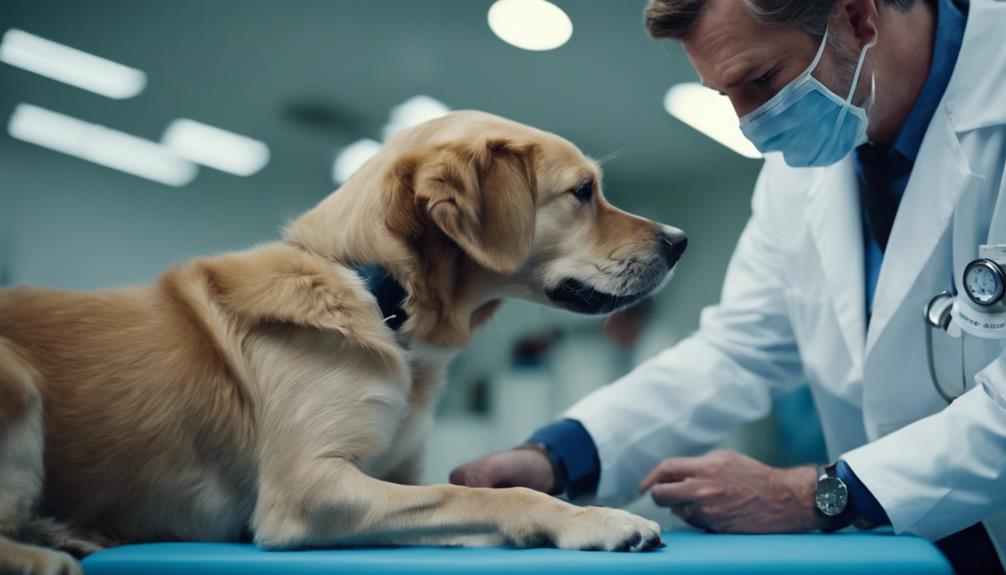
Diagnosis of CCL injuries in dogs typically involves a thorough physical examination and may require additional imaging tests for confirmation. The veterinarian will assess the dog's gait, palpate the knee for swelling or pain, and perform specific manipulations to evaluate the stability of the joint. Additional imaging tests like X-rays or more advanced techniques such as MRI or arthroscopy may be necessary to confirm the diagnosis and assess the extent of the injury. Early and accurate diagnosis is crucial for initiating appropriate treatment and preventing further damage.
| Diagnostic Methods | Description |
|---|---|
| Physical Exam | Assessment of gait, joint stability, and pain. |
| X-rays | Initial imaging to evaluate bone and joint structures. |
| MRI | Provides detailed images of soft tissues like ligaments. |
| Arthroscopy | Direct visualization of the joint's interior for precise diagnosis. |
Treatment Options for CCL Injuries
Treatment options for CCL injuries in dogs typically involve a combination of surgical interventions and conservative management strategies tailored to the individual dog's condition and needs.
- Conservative Management:
- Rest and restricted activity.
- Weight management to reduce stress on the joints.
- Physical therapy to strengthen surrounding muscles.
- Pain management through medications or supplements.
Surgical Interventions for CCL Tears
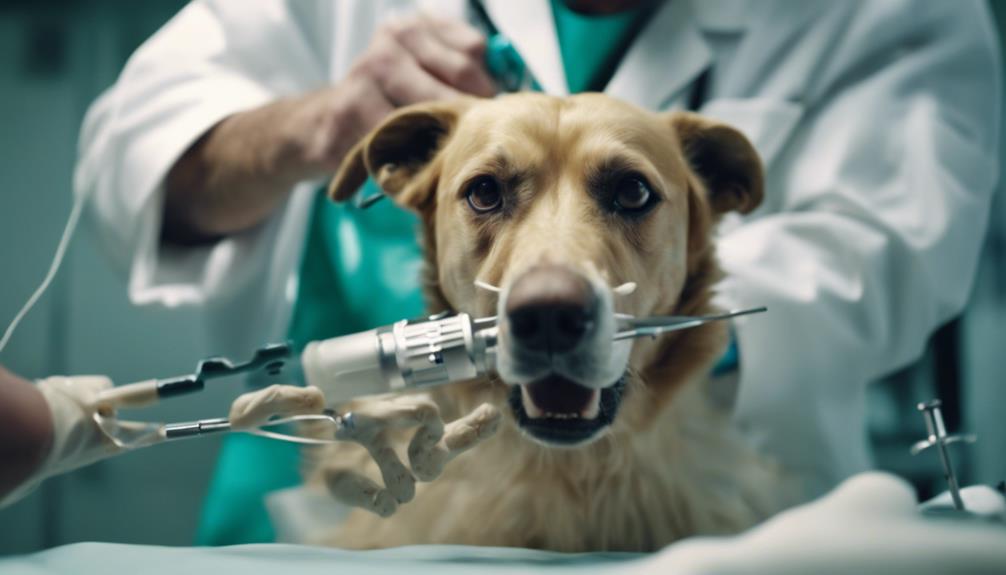
Surgical interventions are a primary consideration for addressing complete CCL tears in dogs, particularly in larger breeds where conservative management may not provide adequate long-term stability. One common surgical option is the Tibial Plateau Leveling Osteotomy (TPLO), which aims to stabilize the knee joint and improve the dog's quality of life. This procedure involves reshaping the tibial plateau to alter the mechanics of the knee joint. After surgery, a period of rest and restricted activity is crucial for successful recovery. It is essential to consult with a veterinarian to determine the most suitable surgical approach for your dog's specific condition.
| Surgical Intervention | Description | Recovery Time |
|---|---|---|
| Tibial Plateau Leveling Osteotomy (TPLO) | Reshapes the tibial plateau to stabilize the knee joint | Weeks of rest and rehab |
| Extracapsular Repair | Uses a suture to stabilize the knee joint | Weeks of restricted activity |
| TTA (Tibial Tuberosity Advancement) | Alters the angle of the tibial plateau to improve joint stability | Post-operative care for weeks |
Non-Surgical Approaches for CCL Tears
Following surgical interventions for complete CCL tears in dogs, non-surgical approaches offer alternative options for managing the condition with a focus on conservative methods. These methods aim to alleviate symptoms, improve mobility, and enhance your dog's quality of life without resorting to surgery.
Some non-surgical approaches include:
- Physical Therapy: Utilizing targeted exercises to strengthen muscles and improve joint stability.
- Weight Management: Maintaining a healthy weight to reduce stress on the affected joint.
- Anti-Inflammatory Medications: Prescribed to manage pain and inflammation in the knee joint.
- Lifestyle Modifications: Adjusting activities to prevent further stress on the knee and promote healing.
Rehabilitation and Recovery for CCL Injuries
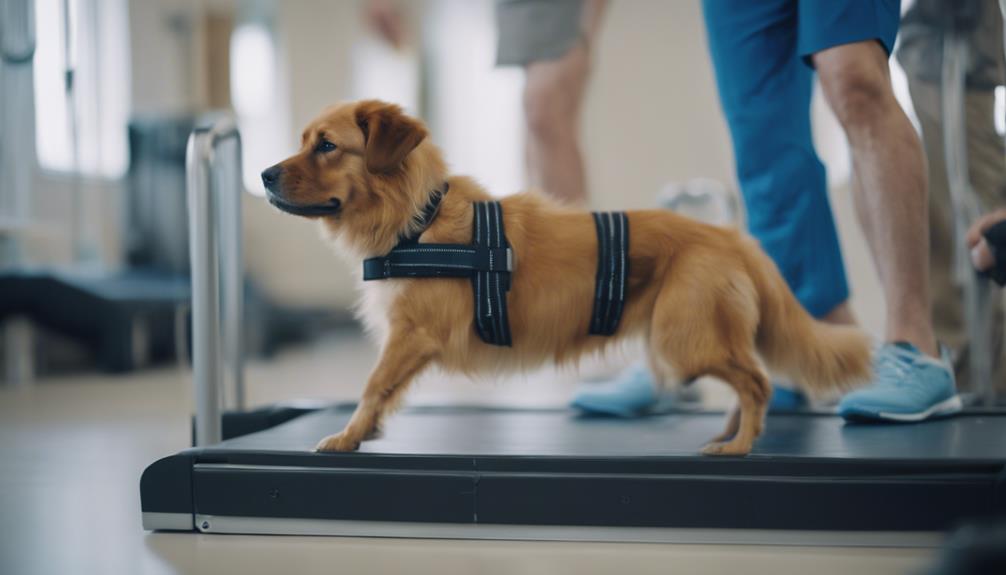
Rehabilitation plays a crucial role in the recovery process for dogs with CCL injuries, focusing on restoring mobility and strength in the affected knee joint. Following surgical or non-surgical treatment, rehabilitation aims to improve muscle tone, joint flexibility, and overall function.
Physical therapy exercises, controlled activities, and gradual increases in movement help prevent stiffness, promote healing, and reduce the risk of further injury. Hydrotherapy, massage, and balanced nutrition are often incorporated into the rehabilitation program to enhance recovery.
Monitoring progress and adjusting the rehabilitation plan accordingly are essential for a successful recovery. It is important to work closely with a veterinarian or a canine rehabilitation specialist to ensure the rehabilitation process is tailored to meet the specific needs of the dog.
Preventing CCL Injuries in Dogs
To reduce the risk of CCL injuries in dogs, implementing proper exercise routines and maintaining a healthy weight are crucial preventive measures. Consistent exercise helps strengthen muscles and supports joint stability, while weight management reduces stress on the joints, particularly in larger breeds.
Additionally, avoiding sudden, high-impact activities can lower the chances of CCL injuries. Regular veterinary check-ups can also help in identifying early signs of joint issues and taking preventive action.
By being proactive in these areas, dog owners can significantly decrease the likelihood of their pets experiencing CCL injuries.
- Consistent exercise routines
- Maintaining a healthy weight
- Avoiding sudden, high-impact activities
- Regular veterinary check-ups
Importance of Weight Management in Prevention
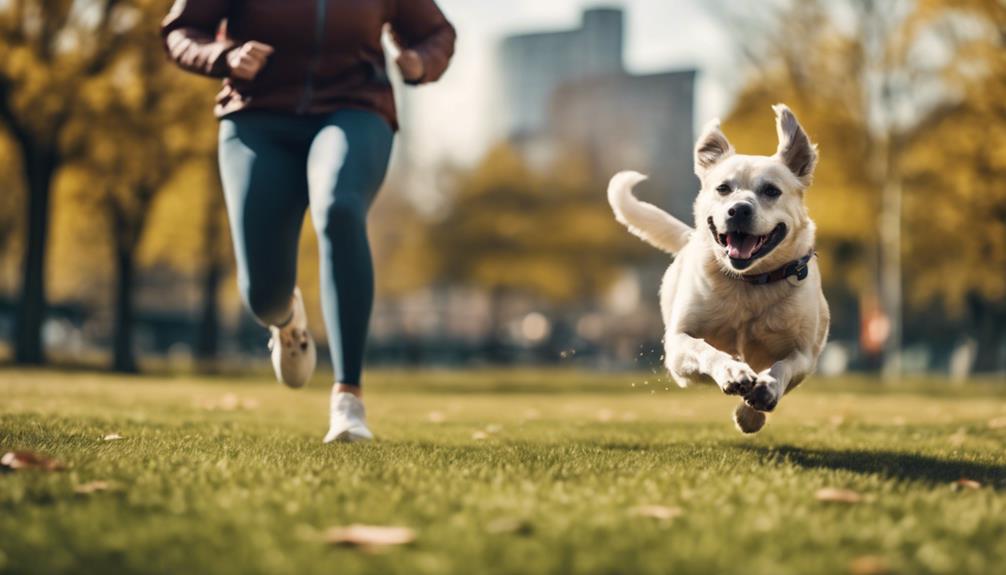
Weight management plays a pivotal role in preventing CCL injuries in dogs, particularly in larger breeds susceptible to joint issues. Maintaining a healthy weight reduces the strain on the joints, including the Cranial Cruciate Ligament (CCL), decreasing the likelihood of injury.
Excess weight puts additional stress on the ligaments and joints, making them more prone to tears or ruptures. Obesity is a significant risk factor for CCL injuries, especially in breeds predisposed to joint problems.
Exercise Guidelines for CCL Health
Regular exercise is essential for maintaining the health and strength of the Cranial Cruciate Ligament (CCL) in dogs susceptible to joint issues. To ensure proper CCL health, consider the following exercise guidelines:
- Low-Impact Activities: Opt for activities like swimming or leash walking to reduce strain on the CCL.
- Moderate Exercise: Engage in regular, moderate exercise sessions to strengthen supporting muscles around the knee joint.
- Avoid High-Impact Exercises: Steer clear of activities that involve jumping or sudden direction changes to prevent excessive stress on the CCL.
- Consistency: Establish a consistent exercise routine to promote overall joint health and CCL stability in your dog.
Early Intervention for CCL Issues
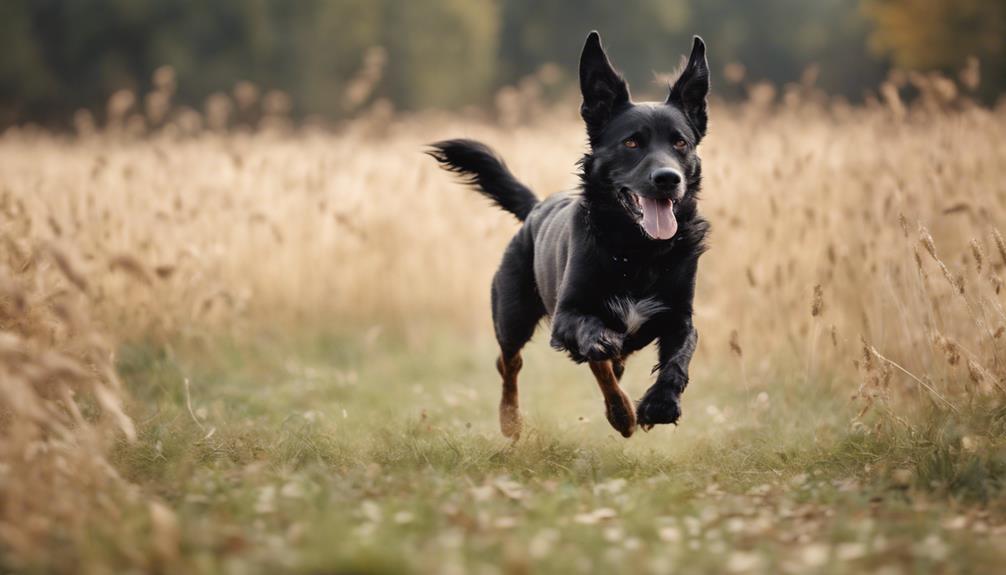
At the onset of canine Cranial Cruciate Ligament (CCL) issues, early detection and intervention play a pivotal role in mitigating further damage and improving outcomes for the affected dog. Prompt veterinary evaluation is crucial when symptoms like limping, difficulty bearing weight, or swelling are observed.
Early intervention may involve conservative management strategies such as rest, restricted activity, weight management, and physical therapy to reduce inflammation and strengthen supporting structures. In some cases, surgical options like Tibial Plateau Leveling Osteotomy (TPLO) or extracapsular repair may be recommended to stabilize the joint and prevent long-term complications.
Timely intervention not only alleviates pain and discomfort but also enhances the chances of a successful recovery for dogs with CCL issues.
Monitoring and Follow-Up Care
After addressing early intervention strategies for CCL issues in dogs, the focus shifts towards ensuring effective monitoring and follow-up care to optimize recovery outcomes and prevent complications.
- Regular veterinary check-ups are crucial to assess healing progress.
- Follow prescribed medication schedules diligently.
- Gradually reintroduce exercise under veterinary guidance.
- Monitor for any signs of discomfort, swelling, or limping post-recovery.
Long-Term Joint Health Strategies
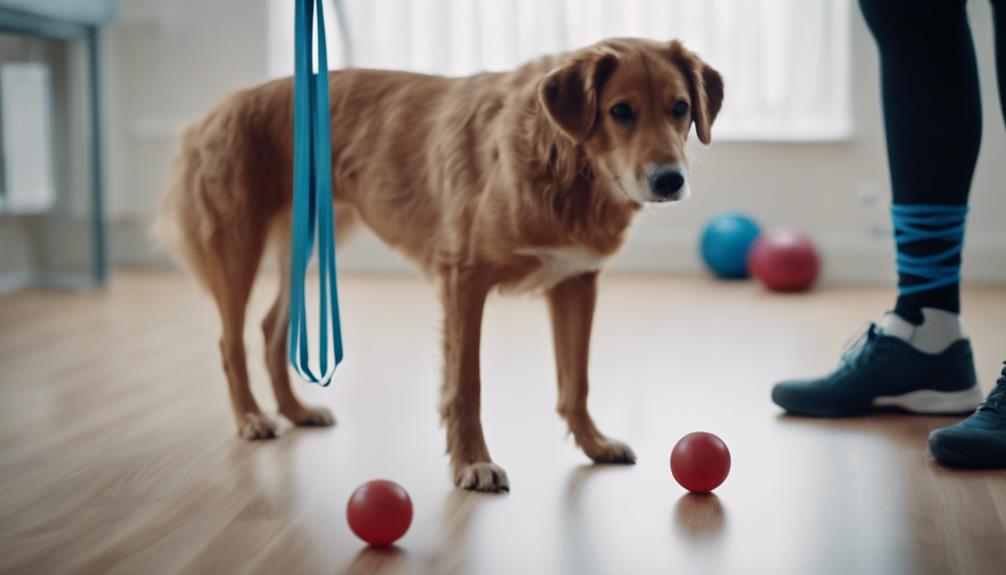
To ensure optimal joint health in dogs following a CCL injury, implementing long-term strategies is imperative for sustained well-being and mobility.
Long-term joint health strategies for dogs post-CCL injury involve maintaining a healthy weight to reduce stress on the joints.
Regular, low-impact exercise tailored to your dog's needs can help strengthen muscles supporting the affected joint.
Providing a balanced diet rich in joint-supporting nutrients like omega-3 fatty acids, glucosamine, and chondroitin sulfate is essential.
Additionally, regular veterinary check-ups to monitor joint health and address any emerging issues promptly are crucial.
Incorporating these long-term strategies can significantly improve your dog's joint health and overall quality of life following a CCL injury.
Conclusion
In conclusion, torn ACL or CCL injuries in dogs are common and require prompt attention to ensure proper diagnosis and treatment. From recognizing symptoms to implementing preventive measures, pet owners and veterinarians play a crucial role in safeguarding canine health and mobility.
By understanding the nuances of treatment options and consistently monitoring joint health, we can help our furry companions lead healthy and active lives. Joint health strategies tailored to individual needs are essential for long-term well-being.




